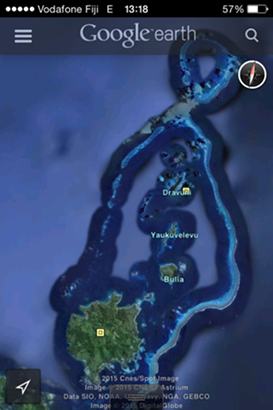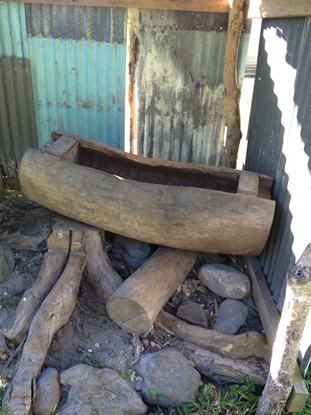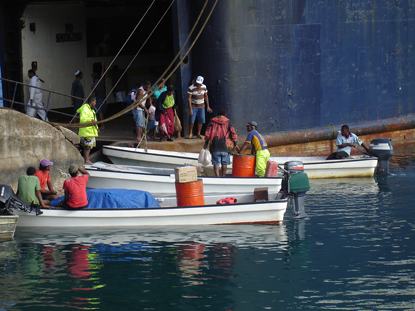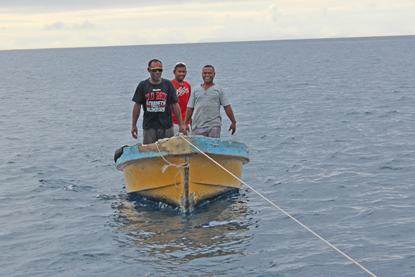Island hopping

|
Island hopping
Bula Bula!! Since our
last blog we’ve been perfecting the fine art of island hopping – Kadavu style. Large high
pressure weather systems over NZ have kept us on our toes producing enhanced SE
trade winds up here. We island hop –
hide from wind – island hop – hide from wind – island hop – hide from wind
….. you get the picture…… Fortunately
the Great Astrolabe Reef provides ample opportunities to explore while still
securing safe anchorages. The main reef
fringes 6 or 8 reasonable sized islands – not all of which are inhabited.  Astrolabe Reef
was named after the French explorer D’Urville who managed to ‘park‘ his vessel
on the reef in 1827. His crew were very
motivated to get her off asap as Fiji was still referred to as “The Cannibal
Isles” back then. Even Captan Cook had
heard of the Fiji’s fierce reputation and wasn’t game enough to come here at
all! The last recorded feasting on “long
pig” was in 1867. Luckily we now have
paper charts, electronic charts and a good set of eyes ! As with most of Fiji waters – they are very
beautiful but things (like reefs and bombies) aren’t always exactly where they’re
supposed to be!  Villages here
are relatively small – anywhere from 40 to 100 people in each – subsistence
farming seemingly providing enough to keep everyone feed and watered. No one has what we would call a “proper job”
but this doesn’t mean people aren’t industrious. The villagers are always up to something it
seems. There are new houses and shelters
to be built, gardens to be tended and trips to be made. Central to every village is what Fijian’s
refer to as a “community building” where we are often taken to be greeted or
meetings or other gatherings are held.
Villages seem to have at least weekly meetings where I guess the “to do
list” for the week is established and tasks allocated. Close-by is always the church and a shelter
built over the village drums. Beating of
drums is a rotating task and they are used not only to call people together
(especially for church) but also to mark time (it’s not like anyone has a
watch).  So every 6
hours (except for 6.00am when they actually do it at 4.00am where we are now –
work that out), the drums call out and people are meant to stop what they are
doing, and take a minute to pray or at least reflect on the day – particularly
what we might have to be grateful for. You
gotta admire the dedication and there’s plenty we can take on board from
traditional village life. As you can
imagine, there are no roads or vehicles on these islands – the highway is the
ocean and the cars are fibre-glass long boats – known as “fibre’s”. They are trucks really carrying at times an unreasonably
large number of people, drums of fuel and anything that comes on the weekly
ferry from Suva that needs to find its way to one of the islands. Children are ferried by “fibre” to board on
the main island of Kadavu for schooling from age 6 which must be a big wrench
for such little ones. At least there is
a steady supply of more children to replace the ones not at home – the average
number of kids per family is 5 we are told.  A few days
ago while heading to the bay we are now anchored in with 25k whistling through
our rigging – a fibre boat drifted into our path during a bit of a squall at
the end of the day. On closer inspection
we saw that there were 2 guys paddling with planks of wood and 1 with a
stick. They had broken down, been
anchored waiting for about an hour for a passing boat and along comes Navara.  We towed
them into Nabouwalu Bay on Ono Island but to our surprise (and much later
slight anxiety) they didn’t want to go ashore into the village. They were from the island of Dravuni – about
10 miles north. They reckoned that if
they went ashore, local protocols would result in a massive grog drinking
(kava) session and that they would have to stay the night. It seems that all they really wanted was to
get home as soon as possible. They also
reckoned they would never hear the end of being “rescued” by kaipalangi’s
(white fellas) so if it was OK with us they would rather just stay on our
boat!! It wasn’t
quite as serious as we had initially thought – they did have a plan to leave –
they just needed to call family to come and get them. The good news was that carefully wrapped in a
plastic bag they had a cell phone and a brand new scratch prepay card
(especially for emergencies we were proudly told). The bad news was that the battery was long
ago flat. The phone it appeared was indeed
for “emergencies only” and there hadn’t been one of these for quite some time
:-) We managed to find an old charger on
Navara that worked so we settled in to firstly get it charged enough to make a
call and secondly for the cavalry to arrive (by fibre boat – in the rain – in
the dark – from miles away). Three cups
of tea each, 3 packets of biscuits, lots of cheese and crackers, 2 very long prayers
in Fijian requesting god to protect us on all future voyages, 2 pairs of plus 1
reading glasses, 3 expired NZ marine flares and a whole lot of singing later –
someone’s brother arrived and they disappeared into the night with not a torch
between them. Apparently when we get to
Dravuni on our way back to Suva there will be more fresh fruit and veggies than
we can eat for which we will be very grateful to receive - Amen.  So now we
are just waiting for the wind to back off a bit – hopefully on Tuesday and then
we plan to sail back to Suva for top ups of diesel, LPG, Hare Khrishna
takeaways and ice-cream before heading towards another group of further afield
islands. With over 300 islands in the
Fiji group to choose from the choices are endless – but we’ll just wait and see
which way the wind blows us. Until then …………….
 |